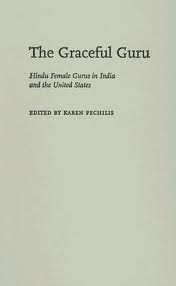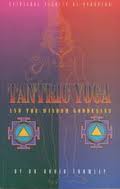"The kundalini is the essence of the Goddess. The Goddess is the source, and the force, of life; everyone has the feminine within"

"In the medieval period, there is an ultimate feminine guru represented in a classical text: the Goddess. It is she, not a wife or a saint, who assumes the public role of teacher and is capable of teaching all of humankind, which is the perspective advanced in the Devi Gita... the culmination of earlier stories of the Goddess found in the puranic mythological stories and in early tantric texts, precisely because the Devi Gita raises the Goddess to the level of Supreme Ruler. In the Devi Gita, supreme cosmic power is unambiguously female: she is a beautiful goddess, her power is the feminine shakti, and she is not linked to a male god, being most frequently referred as Mother. In the text, she first appears as a blazing light, symbolizing brahman, then transforms into a womanly figure, who is the Supreme Ruler Bhuvaneshvari)...
What is unambiguous in the text is that all of humankind is essentially female. The Devi Gita asserts this axiom in two ways. On one level, the Goddess is brahman; thus, humankind's true inner essence, the divine self, is the Goddess. On another level, the Devi Gita explicitly connects the Goddess to the concept of kundalini from yoga theory. The theory of kundalini yoga is known from other texts, on which the Devi Gita draws in presenting the Goddess's teaching on the subject. Basic concepts in this theory of yoga include the understanding that humankind possesses a 'subtle body' alongside the material body. This subtle body is homologized to cosmic entities and their corresponding cosmic energies. The power center is the kundalini, imagined to be coiled like a serpent at the base of the spine. Uncoiling this shakti energy through disciplined activities, including controlled breathing, correct posture, and meditation, is the goal, for it is only through the release of the kundalini that humankind can reach its full potential in sharing the fundamental essence of the universe. With its emphasis on the Goddess as the Supreme Ruler, the Devi Gita can make a further connection not possible in other texts: The kundalini is the essence of the Goddess. The Goddess is the source, and the force, of life; everyone has the feminine within, and must embrace it, then release it, in order to achieve liberation."
Karen Pechilis, The Graceful Guru
Oxford University Press, (August 5, 2004) pp. 23-25

"Kundalini, often translated as the 'serpent power,' is a term which has gained some recognition today, particularly in yogic and New Age circles, though it is seldom properly understood. Kundalini literally means a coiled-up energy or the power that dwells in a cave (kunda). For any transformation to be possible, an energy is needed to bring it about. For the transformation of consciousness a special and powerful energy is needed. This is Kundalini.
Tantra presents a whole yogic and mantric science for developing Kundalini. However, this Tantric science has its foundation or parallels in Vedic, Vedantic and Yoga texts that speak of the transforming word (vak), the energy of consciousness (chit-shakti), or the power of knowledge (jnan-shakti), which are all synonyms for Kundalini.
The traditional role of Kundalini is different than the way in which it is generally viewed today, which is to regard it as a mere force to control and harness. Kundalini is a form of the Goddess and should be worshipped as Her power. It is not some psychic energy to be aroused but a Divine energy to be revered. Efforts to manipulate Kundalini through willful practice or forceful techniques are not only dangerous, but fail to recognize the reality of the Goddess and are contrary to her worship."
Tantric Yoga and the Wisdom Goddesses
David Frawley, Lotus Press (March 1, 1994) p. 30
Disclaimer: This non-profit site contains copyrighted material the use of which has not always been specifically authorized by the copyright owner. We are making such material available to our readers under the education and research provisions of "fair use" in an effort to advance a better comprehension of controversial religious, spiritual and inter-faith issues. If you wish to use copyrighted material for purposes other than "fair use" you must request permission from the copyright owner.